Law & Politics
Restitution Experts Blast Houston’s Museum of Fine Arts for Refusing to Return a Painting Once Purchased for Hitler’s Museum
The Monuments Men Foundation is squaring off against the MFAH in the court of public opinion.
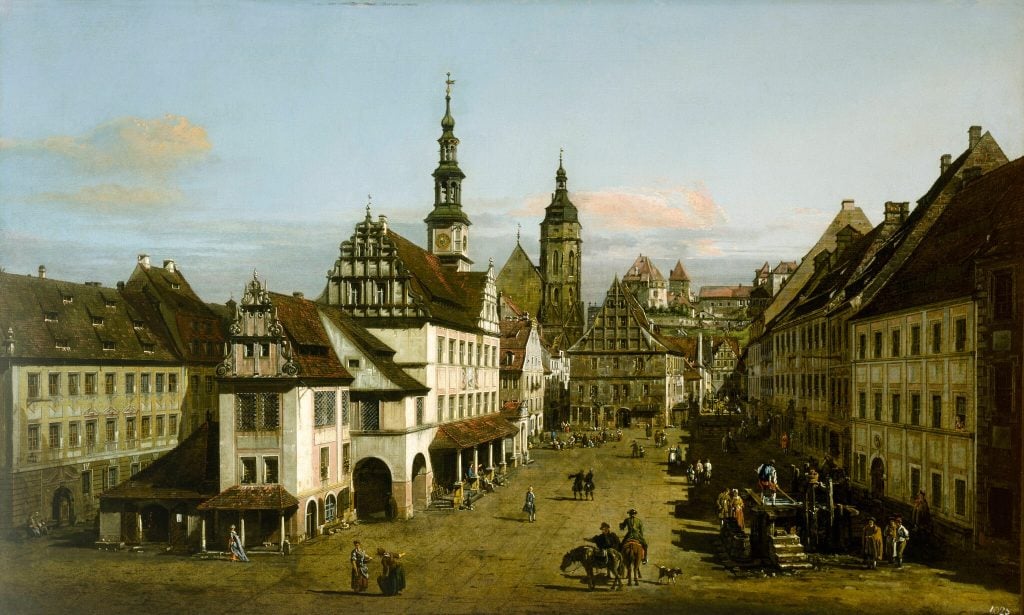
The Monuments Men Foundation is squaring off against the MFAH in the court of public opinion.

Sarah Cascone

The Museum of Fine Arts, Houston is stubbornly defending its ownership of Bernardo Bellotto’s Marketplace at Pirna (ca. 1764)—a painting sold by a Jewish collector in 1938 to an art buyer for Adolf Hitler.
The heirs of Jewish department store owner Max Emden have been seeking the work’s return since 2007. Two other Bellotto paintings Emden sold in the same sale were restituted in 2019, after Germany’s Advisory Commission on Nazi-looted art determined that the sale was a forced one.
But the MFAH continues to insist that the work it holds was not sold under duress—and that even if it was, the museum is still the painting’s rightful owner, and has no obligation to return it, reports the New York Times.
In 1938, Emden worked with Jewish dealer Anna Caspari—the same dealer who originally sold him the works—to broker the sale. He had the paintings with him in Switzerland at the time, and even shipped them to potential buyers in other countries before getting his full asking price of 60,000 Swiss francs from Karl Haberstock, an art dealer working on behalf of the German government. (The works were intended for Hitler’s Führermuseum in Linz, Austria.)
But while Emden was living in Switzerland at the time, most of his assets remained in Germany, where they were seized by the Nazis. He sold the paintings, his heirs argue, because of increasing economic hardship directly caused by the Nazis.
The German Advisory Commission agreed, ruling in 2019 that “the core facts of the case are Max Emden’s economic plight, which was directly caused by National Socialist persecution, and the associated loss of assets as a result of persecution.”
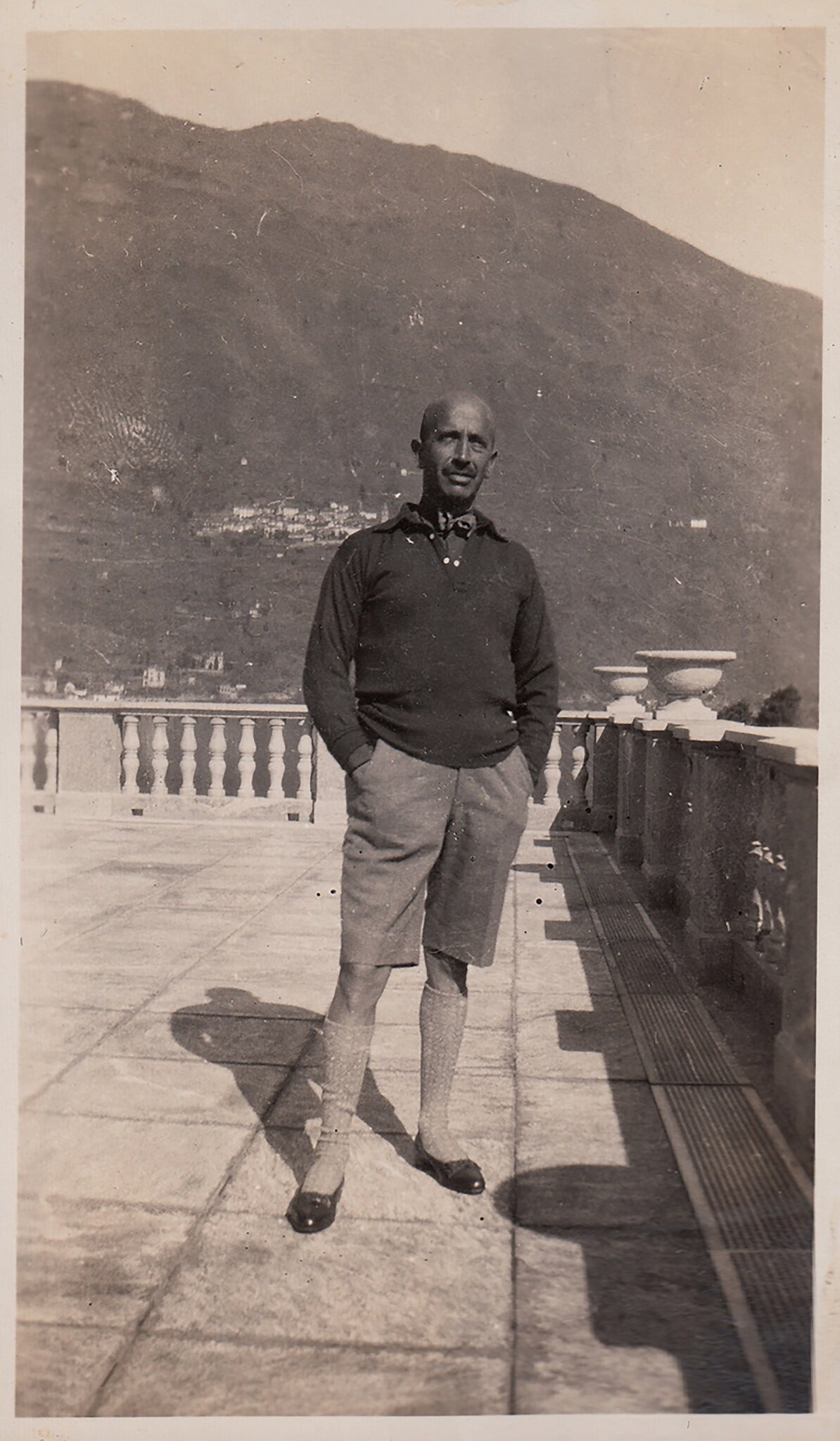
Max Emden sold three paintings by Bernardo Bellotto to an art dealer representing the Nazis in 1938. Photo courtesy of the heirs of Max J. Emden/Monuments Men Foundation.
“European governments which participated in the atrocities against the Jews have different standards” than U.S. museums, MFAH director Gary Tinterow told the Times. He said that the museum is looking to “centuries of property law” in its determination that the painting belongs to Houston.
One independent expert contacted by Artnet News disagreed. “U.S. museums and European bodies are not held to different standards because no entity, governmental or otherwise, should be acquiring stolen works,” art and cultural heritage lawyer Leila Amineddoleh said in an email.
“It is appalling that the director of a major American museum would cling to dated and flawed research and legal technicalities to keep a work of art that belongs to someone else,” another expert, Anna Bottinelli, told Artnet News in an email.
Bottinelli is the president of the Monuments Men Foundation, which seeks to honor the legacy of the Allied Monuments, Fine Arts, and Archives Unit—better known as the Monuments Men—which protected cultural heritage during World War II and sought to return stolen artwork after the conflict ended. The foundation is supporting Emden’s heirs in their claim—including providing an important piece of evidence.
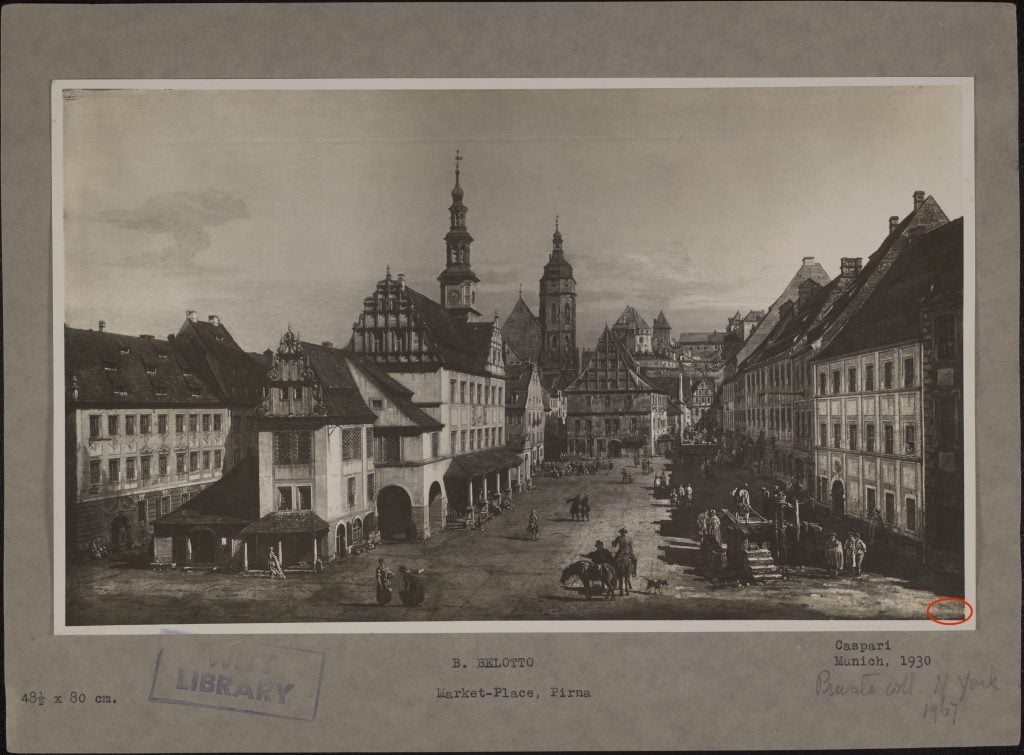
This photograph of Bernardo Bellotto’s The Marketplace at Pirna (ca. 1764) taken by art dealer Anna Caspari before she sold it to Max Emden shows a faint inventory number in the corner from former owner Gottfried Winckler Photo from the Witt Library in London, courtesy of the Monuments Men Foundation.
The case is complicated by the fact that Bellotto was a prolific painter who often painted near-identical compositions multiple times. According to the MFAH, the Monuments Men brought several versions of Pirna, two of which were owned by Hitler, to the Munich Central Collecting Point after World War II, to be returned to their rightful owners.
But in 1949, the Monuments Men mistakenly turned the painting now in the MFAH collection over to the Dutch government to return to Hugo Moser, an Amsterdam art dealer who had owned a painting attributed to Bellotto that had the same title. Moser then sold it to New York collector Samuel Kress, who donated it to the MFAH in 1961.
The museum had previously questioned whether the painting in its collection could be traced to Emden. Part of what has reignited the controversy is that the confusion over the multiple Pirna paintings has finally been cleared up, thanks a 1930 photograph of Emden’s painting that was recently discovered by Monuments Men Foundation at the Witt Library in London.
The work’s 18th-century owner, Gottfried Winckler, had added an inventory number to the front of his canvas, which is clearly visible in the image taken by Caspari, Emden’s art dealer, ahead of its original sale to him. The same number can be observed on the Houston painting.
“While the MMF’s information is helpful in determining prior ownership, it does not alter the legitimacy of the 1938 sale,” the museum wrote to Artnet News, adding that it “affirms its legitimate title to the painting” and “refutes the characterization of the painting as having been subject to a forced sale.”
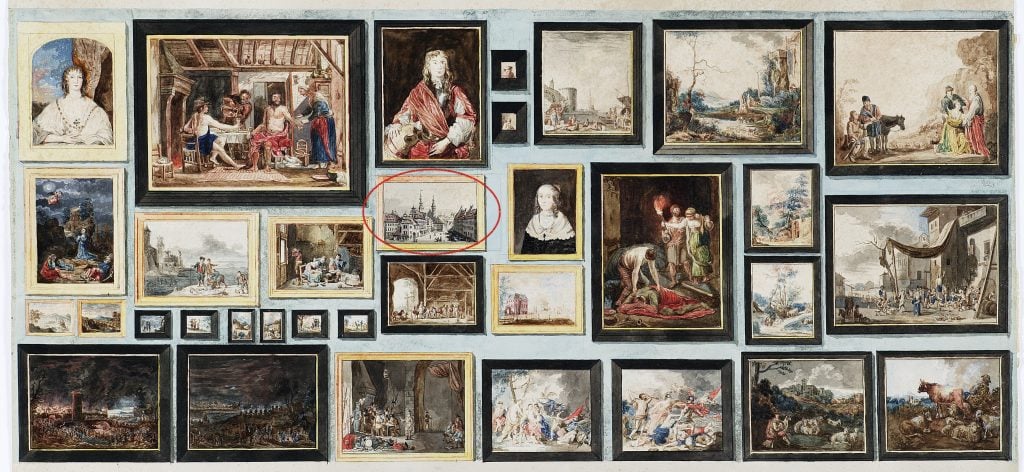
This watercolor of the Gottfried Winckler Collection in Leipzig shows Bernardo Bellotto’s The Marketplace at Pirna (ca. 1764), which later belonged to Max Emden. Courtesy of the Stadtgeschichtliches Museum Leipzig, via the Monuments Men Foundation.
The museum argues that Emden himself did not consider the Bellottos a forced sale, because Emden’s son and heir never sought their return, “even though he did successfully pursue restitution for other family assets left behind in Germany,” according to a recent MFAH statement.
But the U.S. is a signatory of the non-binding Washington Principles on Nazi-Confiscated Art in 1998, which supports the restitution of property lost during Nazi rule.
“For any American museum to ignore its responsibilities under the Washington Principles, which govern their duty to victims of Hitler and the Nazis, is more than just appalling. It ignores the moral arc of history,” Monuments Men Foundation cofounder Robert M. Edsel told Artnet News in an email. “It desecrates the memory of those who perished in the Holocaust.”
The museum disputes the characterization. “We have abided by the Washington Principles by commissioning independent investigations and thoroughly sharing our findings with the Emden heirs,” a MFAH representative wrote.
Tinterow also stands by an independent report conducted on behalf of the museum by provenance researcher Laurie Stein, of Chicago’s L. Stein Art Research back in 2007. She concluded that the sale was, in fact, voluntary.
The museum also noted that “the modern-day Emden heirs also did not pursue a claim” when it reached out about the painting in both 2007 or 2011. Now, however, the heirs are once again making their case, supported by the Monuments Men Foundation.
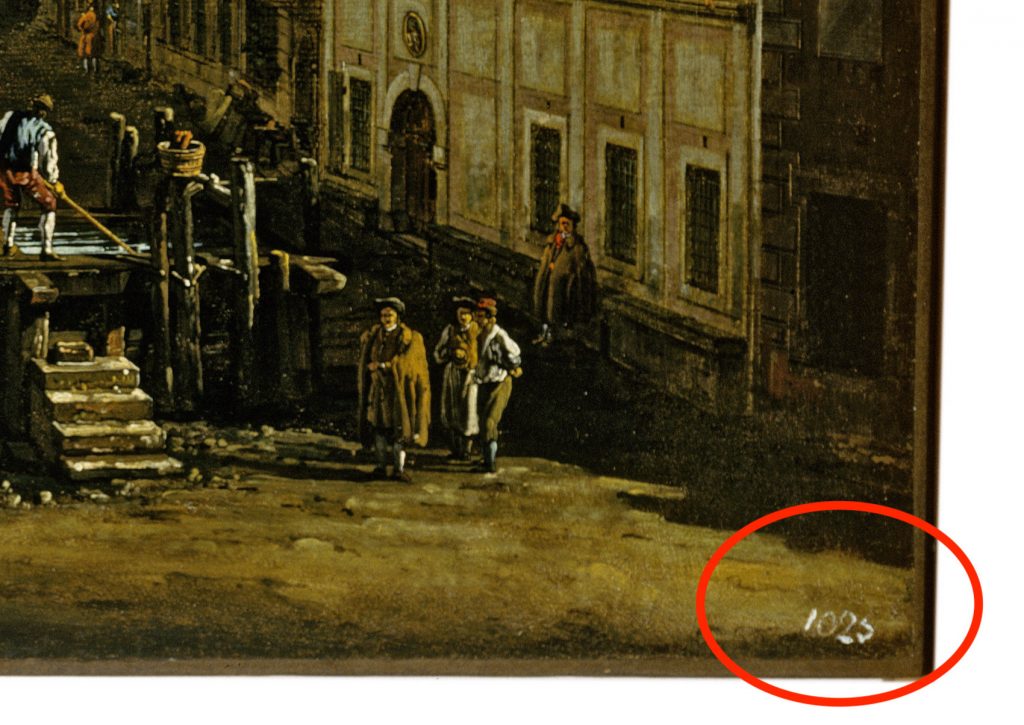
An inventory number from Gottfried Winckler can be seen on the corner of Bernardo Bellotto’s The Marketplace at Pirna (ca. 1764). Collection of the Museum of Fine Arts, Houston. This number can be seen faintly in historic photographs of the work, proving this is the same version of the work sold by Max Emden.
Tinterow told the Times that under U.S. law, the museum is the lawful owner because the painting came to it through a foreign sovereign nation. But that reading of the law may be questionable, according to Amineddoleh, the art and heritage lawyer.
“If goods are purchased from a thief or a person who is not the owner, then the buyer does not acquire legal title, even if he has paid value for the items in good faith,” she said. “The museum most likely is not the rightful owner.”
“A clerical error does not and cannot vest good title,” Bottinelli wrote to Artnet News. “Further, based on our extensive research, we believe that Hugo Moser KNEW the moment he saw the Emden Bellotto that it was NOT HIS Bellotto, and that he had received the wrong painting. Rather than inform officials of the mistake, he sold the painting.”
Currently, there are no legal proceedings surrounding the painting. The Monument Men Foundation had reached out to the MFAH in April in the hope that its new research would sway the museum to return the painting voluntarily. But that does not seem likely based on the museum’s recent statements to the press.
Should the Emden heirs pursue a legal claim, there is little precedent in U.S. courts regarding sales made under duress during Nazi rule. The courts recently dismissed two such cases—about a Pablo Picasso painting at the Metropolitan Museum of Art in New York, and the Guelph Treasure at Berlin’s Museum of Decorative Arts—but both on legal technicalities, rather than the merits of the plaintiff’s claims.